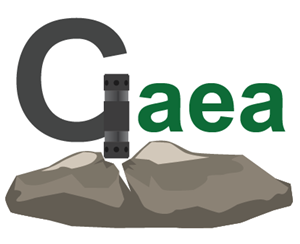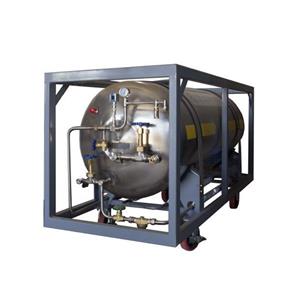Why O2 Gas Energy Rock Splitting is the Future of Rock Blasting
New technology: O2 rock demolition system
Link:
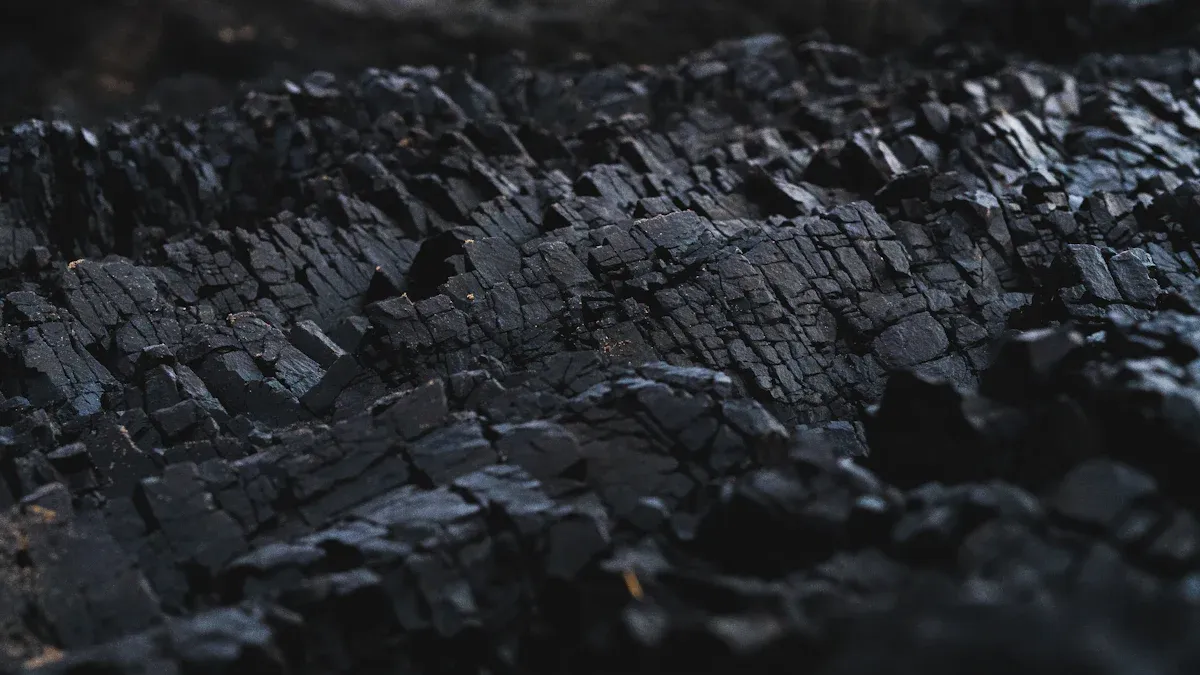
Imagine a world where rock blasting becomes safer, cleaner, and more efficient. O2 gas energy rock splitting makes this vision a reality. This innovative technology transforms how we approach rock demolition, offering a method that prioritizes safety and reduces environmental harm. By using advanced gas energy mechanisms, it eliminates many risks associated with traditional explosives. Operators can now split rocks with precision while minimizing noise and vibration. This breakthrough not only enhances productivity but also ensures a sustainable approach to rock demolition projects.
Key Takeaways
O2 gas energy rock splitting is safer without using explosives.
It lowers risks for workers and people living nearby.
This method allows better control, reducing waste during rock breaking.
It helps save important materials when tearing down structures.
O2 gas energy splitting makes less noise and shaking.
This makes it great for cities and nature-friendly places.
Using O2 gas energy can cut costs and boost work speed.
It helps industries like mining and building save time and money.
Choosing this method supports the need for green solutions.
It ensures rock blasting is better for the planet's future.
The Limitations of Traditional Rock Blasting

Safety Risks and Hazards
When I think about traditional rock blasting, the first concern that comes to mind is safety. The use of explosives introduces significant risks to operators and nearby communities. Between 1994 and 2004, there were 107 reported injuries related to blasting in the United States. This statistic highlights the dangers associated with handling and deploying explosives.
Blasting vibrations, which typically range from 5 to 30 Hz, can also pose risks. While these vibrations are less intense than earthquakes, they can still cause structural damage or destabilize slopes if not carefully controlled. Uncontrolled blasting may lead to slope failures, especially when permanent displacement exceeds the critical value of the slope. These hazards make traditional methods a less reliable option for projects requiring precision and control.
Environmental Damage and Pollution
Traditional rock blasting methods often leave a lasting impact on the environment. Explosives release dust and fumes into the air, contributing to air pollution. Noise pollution from high-decibel blasts disrupts local ecosystems and human communities. Ground vibrations and air overpressure can also disturb wildlife habitats and even damage nearby structures.
Another concern is water contamination. Chemicals from explosives can leach into nearby water sources, posing risks to aquatic life and drinking water supplies. In mining operations, the use of traditional blasting methods has been shown to significantly increase air and noise pollution, further emphasizing the environmental toll of these techniques.
Inefficiency and High Costs
Traditional rock blasting is not only hazardous and environmentally damaging but also inefficient and costly. These methods require more labor, leading to higher operational expenses. Additionally, they result in higher ore dilution and mineral losses, which reduce the overall yield of valuable resources.
To illustrate this, consider the following comparison:
This table clearly shows how traditional methods fall short in terms of efficiency and cost-effectiveness. Modern alternatives, like O2 gas energy rock splitting, address these issues by reducing labor needs, minimizing resource loss, and improving overall productivity.
What is O2 Gas Energy Rock Splitting?
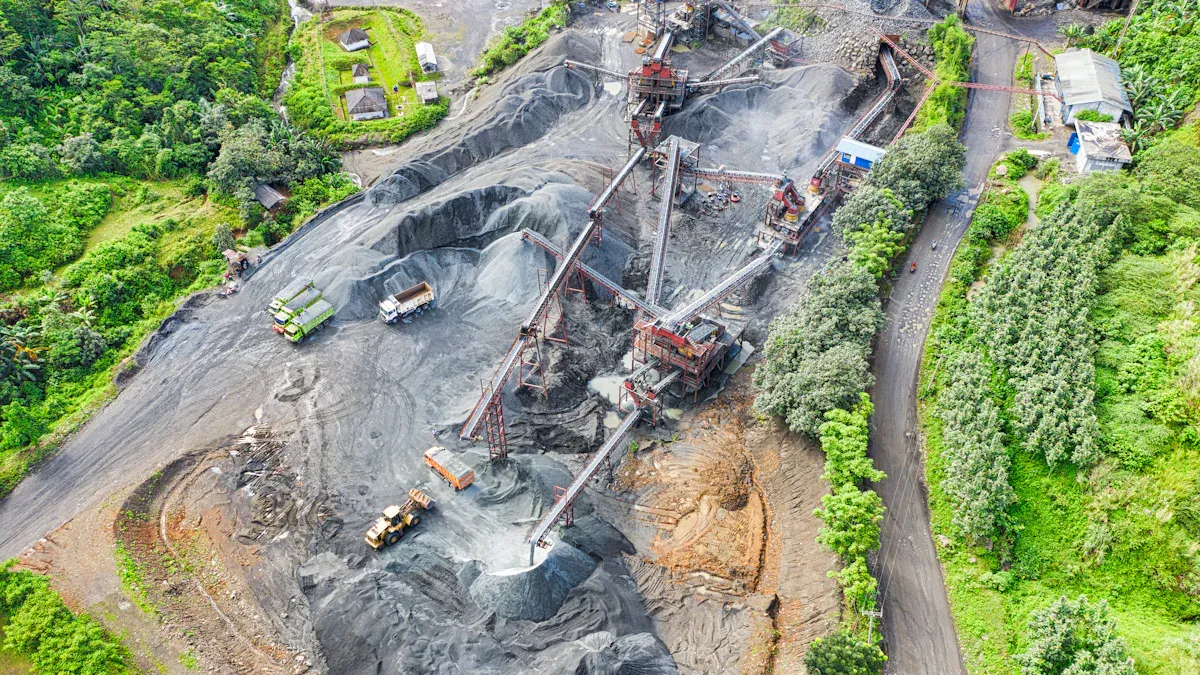
Overview of the Technology
I’ve always been fascinated by how advancements in technology can transform industries. O2 gas energy rock splitting is one such innovation that has redefined rock blasting. This method uses a high-pressure gas energy mechanism to split rocks effectively without relying on traditional explosives. It’s a safer, cleaner, and more precise approach to rock demolition. By eliminating the need for harmful chemicals and reducing noise and vibration, this technology is ideal for projects in urban areas or environmentally sensitive locations. Its versatility allows it to handle various types of rock, from granite to limestone, making it a game-changer in the field.
How It Works
The process behind O2 gas energy rock splitting is both simple and ingenious. I’ve seen how it works firsthand, and it’s impressive. The system generates high-pressure gas, which expands rapidly within pre-drilled holes in the rock. This expansion creates a powerful force that fractures the rock along natural lines of weakness. Unlike traditional methods, this approach doesn’t rely on shock waves or explosions. Instead, it uses controlled gas energy to achieve precise and efficient results. Operators can set up and execute the process quickly, which reduces downtime and increases productivity on job sites.
Key Differences from Traditional Methods
When comparing O2 gas energy rock splitting to traditional rock blasting, the differences are striking. Traditional methods rely on high-energy explosives, which create substantial fragmentation zones and short-duration shock waves. In contrast, O2 gas energy rock splitting uses moderate energy, resulting in efficient fragmentation and extended-duration fracture creation. Here’s a table that highlights these differences:
This comparison shows why I believe O2 gas energy rock splitting is the future of rock blasting. It offers better control, enhanced safety, and a reduced environmental footprint, making it the superior choice for modern projects.
Key Advantages of O2 Gas Energy Rock Splitting
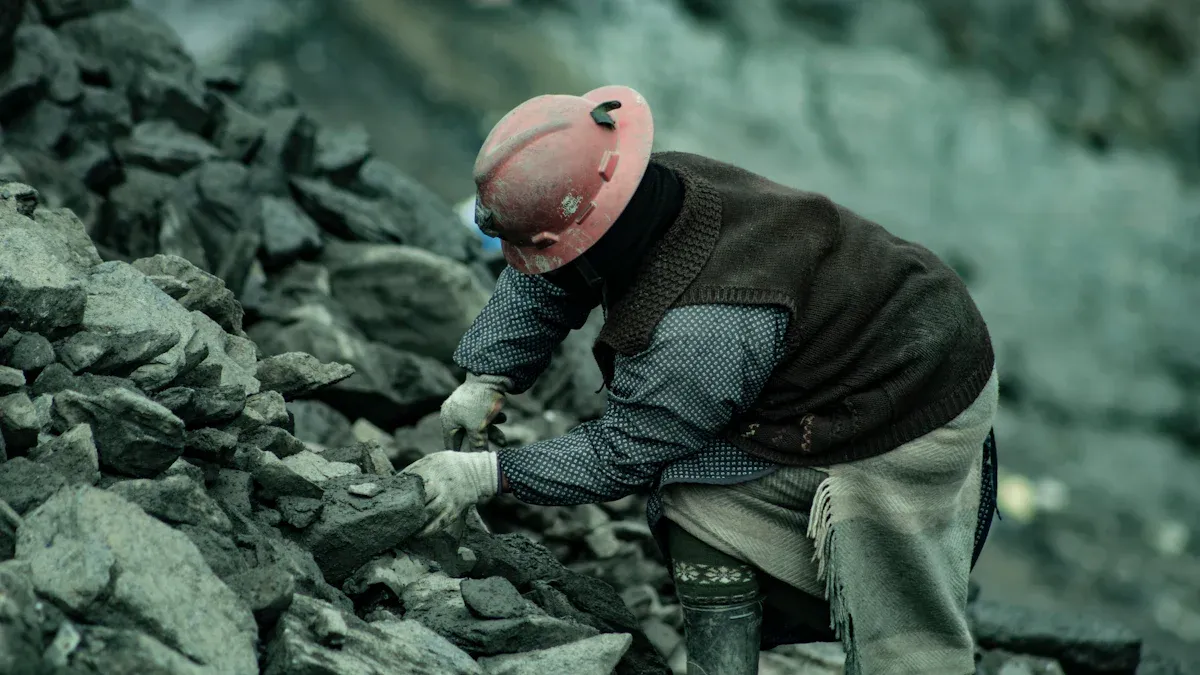
Enhanced Safety for Operators and Surroundings
When I think about the most critical aspect of any rock blasting operation, safety always comes first. Traditional methods often involve explosives, which carry inherent risks like accidental detonations and flying debris. With O2 gas energy rock splitting, these dangers become a thing of the past. This technology eliminates the need for explosives entirely. Instead, it uses controlled gas expansion to fracture rocks. This approach ensures that operators and nearby communities remain safe throughout the process.
I’ve noticed how this method significantly reduces the risk of injuries. The absence of shock waves and high-energy blasts means there’s no sudden force that could harm workers or damage nearby structures. Additionally, the system is easy to operate. Even with minimal training, operators can handle the equipment confidently. This simplicity not only enhances safety but also boosts efficiency on job sites. For me, knowing that this method prioritizes the well-being of everyone involved makes it a clear winner.
Precision and Control in Rock Splitting
Precision is another area where O2 gas energy rock splitting truly shines. Traditional blasting methods often lack control, leading to over-fragmentation or damage to surrounding areas. I’ve seen how this can result in wasted resources and additional costs. With O2 gas energy technology, operators can achieve a level of precision that was previously unimaginable.
The process involves drilling small, targeted holes into the rock. The high-pressure gas then expands within these holes, creating fractures along natural lines of weakness. This controlled approach ensures that only the intended sections of rock are split. I’ve observed how this precision minimizes waste and preserves valuable resources. It’s especially useful in projects where accuracy is crucial, such as urban construction or mining operations. For me, the ability to control the outcome so effectively is one of the most impressive aspects of this technology.
Reduced Noise, Vibration, and Environmental Impact
One of the biggest challenges with traditional rock blasting is the noise and vibration it generates. These disturbances can disrupt local communities and ecosystems. I’ve heard complaints from residents living near blasting sites about the constant noise and shaking. O2 gas energy rock splitting offers a much quieter and gentler alternative.
This method produces minimal noise and vibration, making it ideal for use in sensitive environments. For example, in urban areas, it allows construction projects to proceed without disturbing nearby residents. In natural habitats, it protects wildlife from the stress caused by loud explosions. I’ve also noticed how this technology reduces environmental harm. It doesn’t rely on harmful chemicals, so there’s no risk of contaminating soil or water sources. For me, this eco-friendly approach aligns perfectly with the growing demand for sustainable solutions in the industry.
Tip: If you’re working on a project in a densely populated or environmentally sensitive area, consider using O2 gas energy rock splitting. It’s a safer, quieter, and greener alternative to traditional methods.
Cost-Effectiveness and Increased Productivity
When I think about the costs associated with traditional rock blasting, I see inefficiencies everywhere. These methods require extensive labor, expensive explosives, and time-consuming safety measures. O2 gas energy rock splitting, on the other hand, offers a cost-effective alternative that transforms how we approach rock demolition.
One of the biggest advantages of this technology is its ability to reduce operational expenses. Traditional methods often involve a large team of workers to handle explosives, monitor safety, and clean up debris. With O2 gas energy rock splitting, fewer workers are needed. The system is easy to operate, so even a small team can complete tasks efficiently. This reduction in labor costs makes a noticeable difference in overall project budgets.
Another way this method saves money is by minimizing material waste. Traditional blasting often results in over-fragmentation, which damages valuable resources. I’ve seen how O2 gas energy technology prevents this by offering precise control over the splitting process. This precision ensures that only the targeted sections of rock are affected, preserving the integrity of surrounding materials. For industries like mining, where every ounce of material counts, this precision translates to higher yields and lower losses.
Time is another critical factor in any project. I’ve noticed how traditional blasting methods often lead to delays due to lengthy setup times and post-blast cleanups. O2 gas energy rock splitting eliminates these delays. The system allows operators to set up quickly and execute tasks with minimal downtime. This efficiency boosts productivity on job sites, enabling teams to complete projects faster and move on to the next task.
Here’s a quick comparison to highlight the cost and productivity benefits:
For me, the numbers speak for themselves. O2 gas energy rock splitting not only reduces costs but also maximizes productivity. This combination makes it the ideal choice for modern rock demolition projects. Whether you’re working in mining, construction, or infrastructure development, this technology ensures that you get the job done efficiently and economically.
Note: If you’re looking to save money and improve efficiency on your next project, consider switching to O2 gas energy rock splitting. It’s a smart investment that pays off in both the short and long term.
Applications and Real-World Success Stories
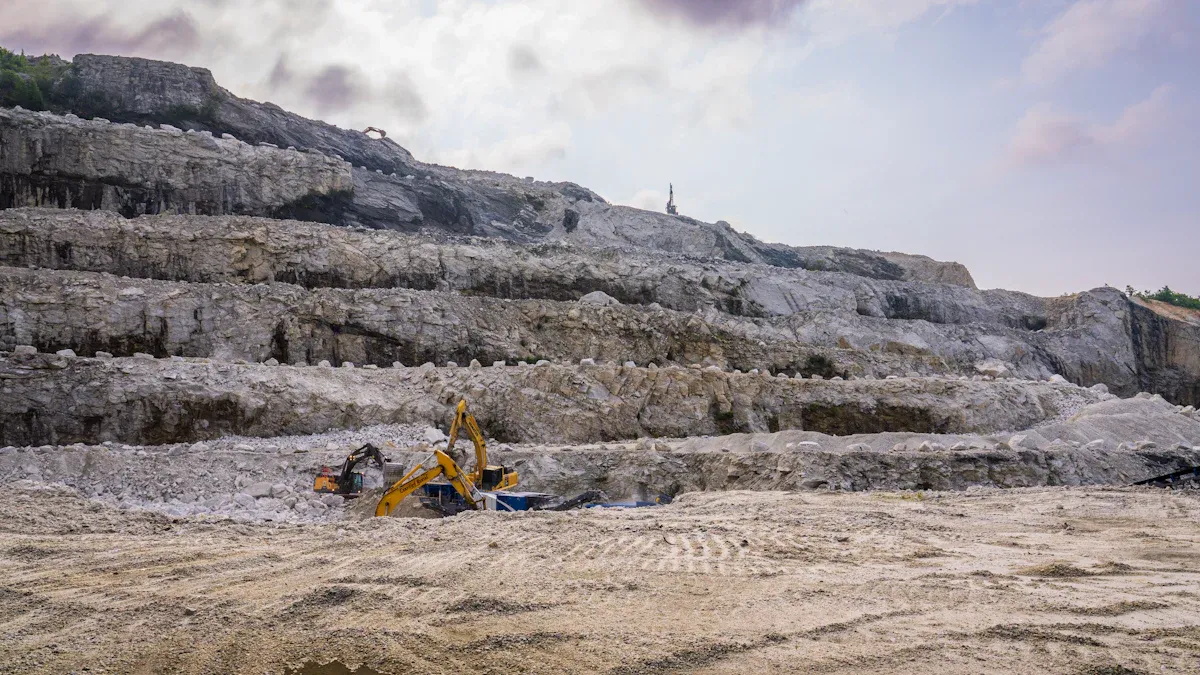
Mining and Quarrying Operations
I’ve seen how O2 gas energy rock splitting has transformed mining and quarrying operations. Traditional methods often involve explosives, which can lead to over-fragmentation and wasted resources. With this advanced technology, operators can achieve precise rock splitting, preserving valuable minerals and reducing material loss. The controlled nature of the process also minimizes the risk of accidents, making it a safer choice for mining teams.
Drilling plays a crucial role in this process. Operators drill small, targeted holes into the rock, allowing the high-pressure gas to work effectively. This precision ensures that only the desired sections of rock are split, leaving the surrounding material intact. I’ve noticed how this approach not only improves efficiency but also reduces the environmental impact of mining activities. For me, this makes it an ideal solution for modern quarrying projects.
Infrastructure and Urban Construction Projects
Urban construction projects often face challenges like noise restrictions and safety concerns. I’ve observed how O2 gas energy rock splitting addresses these issues effectively. This method produces minimal noise and vibration, making it suitable for densely populated areas. It allows construction teams to work without disturbing nearby residents or damaging existing structures.
Drilling is again a key step in this process. By creating precise holes in the rock, operators can control the splitting process with remarkable accuracy. This level of control is essential for infrastructure projects, where precision is critical. I’ve seen how this technology has been used to safely demolish rock formations near roads, bridges, and buildings. It’s a game-changer for urban construction.
Case Studies Featuring Yantai Gaea’s Innovations
Yantai Gaea has been at the forefront of O2 gas energy rock splitting technology. I’ve read about their success in various projects, from mining operations to urban construction. One notable case involved a mining site where traditional blasting methods had failed to deliver the desired results. Yantai Gaea’s system not only improved efficiency but also reduced the environmental footprint of the operation.
Another example is a large-scale urban construction project. The team used Yantai Gaea’s technology to split rocks near residential areas. The process was so quiet and controlled that residents barely noticed the work. These real-world applications highlight the versatility and effectiveness of this innovative technology. For me, Yantai Gaea’s contributions are shaping the future of rock blasting.
Future Trends and Innovations in Rock Blasting
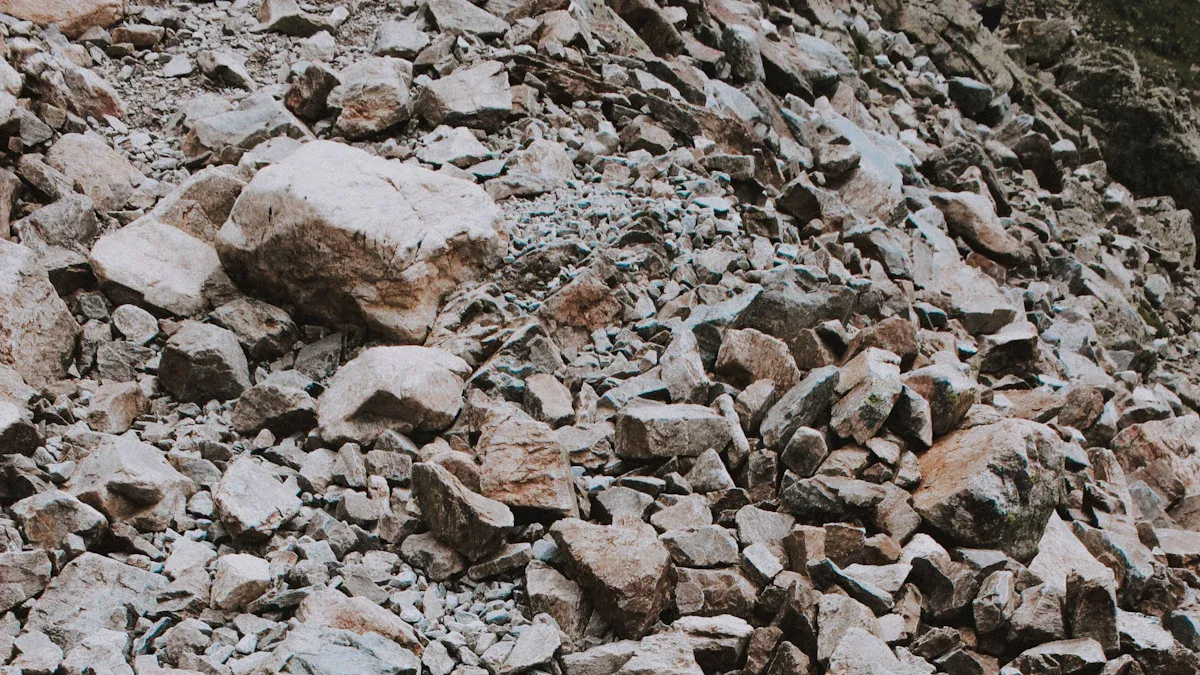
Integration with Smart and Sustainable Technologies
I’ve noticed how the rock blasting industry is embracing smart and sustainable technologies to improve efficiency and reduce environmental impact. Automation and smart systems are becoming integral to modern blasting operations. For example, electronic detonators now offer precise timing, enhancing both safety and performance. I’ve also seen the rise of eco-friendly explosives, such as water-based emulsions, which minimize environmental harm.
The development of advanced materials is another exciting trend. Engineers are creating sustainable blasting stemming plugs and composite materials to boost performance. These innovations not only improve results but also align with the growing demand for greener solutions. Here’s a quick overview of some key trends:
These advancements show how the industry is evolving to meet modern challenges while prioritizing sustainability.
Growing Demand for Eco-Friendly Solutions
The demand for eco-friendly solutions in rock blasting has grown significantly. I’ve observed how regulations in certain regions, like Brazil, prohibit the use of traditional explosives in mining areas. This has led to the adoption of non-explosive products like Plasma4th, which address environmental restrictions. These technologies reduce pollutants, noise, and vibrations, making them ideal for sensitive environments.
Sustainability is no longer optional—it’s a necessity. Companies are now customizing bulk explosives to meet specific project needs, ensuring safety and reducing waste. This shift reflects the industry’s commitment to protecting the environment while maintaining high performance. I believe this trend will continue to shape the future of rock blasting, especially in applications like tunneling and urban construction.
Yantai Gaea’s Role in Shaping the Future of Rock Blasting
Yantai Gaea has been a pioneer in driving innovations in rock blasting. Their focus on eco-friendly and efficient solutions has set a new standard for the industry. I’ve read about their cutting-edge technologies, which combine precision with sustainability. For instance, their O2 gas energy rock splitting system eliminates the need for harmful chemicals and reduces noise pollution.
Yantai Gaea’s commitment to research and development ensures they stay ahead of the curve. They actively integrate smart technologies into their systems, making them more user-friendly and effective. I believe their contributions will play a crucial role in advancing the industry, particularly in areas like mining, tunneling, and urban construction. Their work inspires confidence in a future where rock blasting is safer, cleaner, and more efficient.
O2 gas energy rock splitting has redefined rock blasting by focusing on safety, precision, and sustainability. I’ve seen how this method outperforms traditional techniques, making it the go-to solution for modern industries.
Why it matters: As industries shift toward eco-friendly and efficient practices, this technology stands out as the future of rock demolition.
Yantai Gaea leads this transformation with groundbreaking innovations. Their commitment to advancing this technology inspires confidence in a safer, cleaner, and more productive future for rock blasting. I believe this is just the beginning of a new era in the industry.
FAQ
What makes O2 gas energy rock splitting safer than traditional blasting?
I’ve seen how this method eliminates explosives, reducing risks like accidental detonations. The controlled gas expansion ensures safety for operators and nearby areas. It also minimizes flying debris and shock waves, making it a safer choice for sensitive environments.
Can O2 gas energy rock splitting be used in urban areas?
Absolutely! This technology produces minimal noise and vibration. I’ve noticed how it works perfectly in densely populated areas without disturbing residents or damaging nearby structures. Its precision and quiet operation make it ideal for urban construction projects.
How does this method reduce environmental impact?
O2 gas energy rock splitting avoids harmful chemicals and reduces dust, noise, and vibrations. I’ve observed how it protects ecosystems and prevents water contamination. This eco-friendly approach aligns with the growing demand for sustainable solutions in the industry.
Is this technology cost-effective?
Yes, it is! I’ve seen how it reduces labor costs and material waste. Its quick setup and efficient operation save time and money. For industries like mining and construction, this method boosts productivity while lowering overall expenses.
What types of rock can this technology handle?
This system works on various rock types, including granite, limestone, and sandstone. I’ve watched it adapt to different projects with ease. Its versatility makes it a reliable choice for mining, quarrying, and construction tasks.
